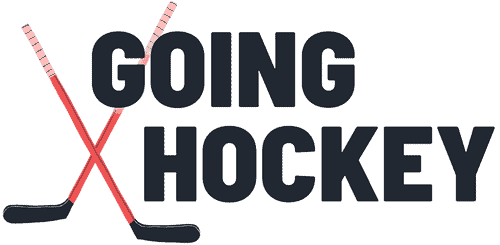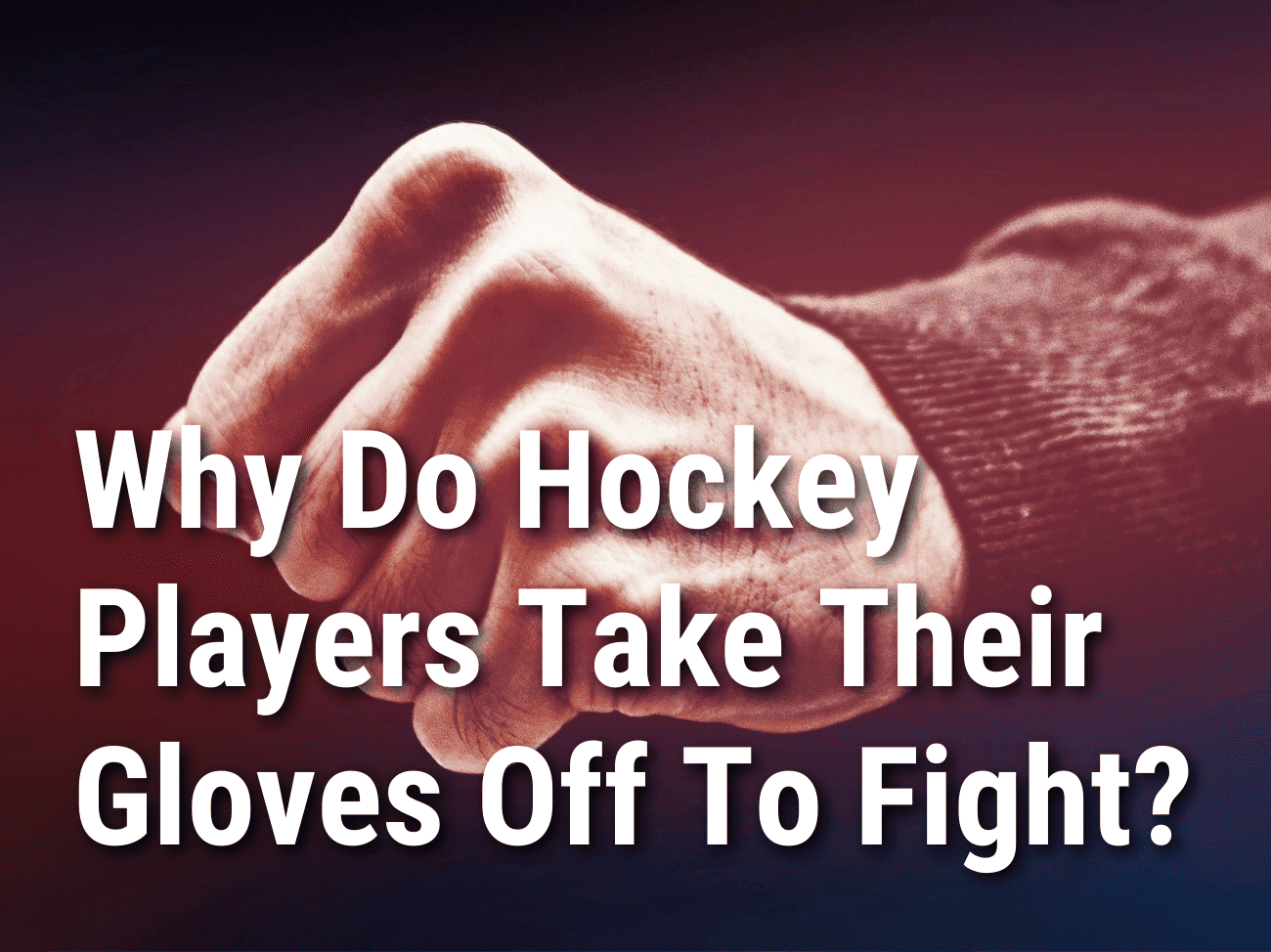In the fast-paced, adrenaline-fueled world of ice hockey, there exists a curious phenomenon that has become ingrained in the sport’s culture: the willingness of players to shed their gloves and engage in bare-knuckle fisticuffs on the ice.
Why Do Hockey Players Take Their Gloves Off To Fight?
2 reasons why hockey players take their gloves off to fight:
- Tradition
- Tactical benefits
Why Do Hockey Players Take Their Gloves Off To Fight?
Hockey Players Take Their Gloves Off As A Matter Of Tradition
One reason hockey players take their gloves off to fight is “tradition.” Removing your gloves before a fight is referred to as “dropping the gloves” and is a universal sign in hockey that you are trying to fight.

Dropping the gloves signals to the other player that you are ready and able to fight. Although a “fight” is defined differently in the NHL rule book, for players and fans a “fight” isn’t really said to have happened unless both players drop their gloves.
Players sometimes throw a punch or two with gloves on, but this behavior is mostly reserved for small skirmishes. Once a fight actually gets going, players will take their gloves off to throw punches.
Hockey Players Take Their Gloves For Tactical Benefits
Removing your gloves also has tactical benefits in a hockey fight. Once hockey players take their gloves off, they can expect increases in both:
- Grappling ability
- Punching Force
Hockey gloves are loose-fitting and bulky, which decreases both grip and hand mobility in a fight. That’s why, for purposes of grappling, it’s much better for hockey players to take their gloves off. This provides maximum grip on the opponent’s jersey or shoulder pad as well as maximum hand flexibility for controlling the opponent’s movements.

Removing gloves also increases the force of each punch in a fight. Hockey gloves are full of padding which can act as a cushion, diffusing the force created by each punch. To avoid this loss of punching power, hockey players simply take their gloves off.
More force can be transferred from a bear-knuckle punch than a punch from a cushioned glove. This is one of the reasons why fighting sports like boxing and MMA feature padded gloves.
Removing gloves is, however, a double-edged sword as it increases the likelihood of broken bones and fractures for the person punching.
Can You Fight With Gloves On In Hockey?
There is no official rule in the National Hockey League (NHL) that specifically instructs players to take their gloves off for a fight.
The NHL’s official rulebook does not address the act of removing gloves during a fight. Instead, it focuses on penalties and consequences for engaging in fighting, such as major penalties, game misconduct, and suspensions.

The act of removing gloves before a fight has become an unwritten tradition and an understood part of the hockey fighting culture. Players typically take off their gloves voluntarily as a sign of readiness and mutual agreement to engage in a fight.
This unwritten code has evolved over time and is ingrained in the sport’s culture, but it is not an official rule mandated by the league.
What Are Hockey Gloves Made Of?
Hockey gloves are typically made of a combination of materials that provide protection, flexibility, and durability. The main components of hockey gloves include:
- Exterior Shell
- The outer shell of hockey gloves is usually made of synthetic materials such as nylon or polyester. These materials are lightweight, durable, and provide resistance against wear and tear.
- Padding
- The padding in hockey gloves is designed to protect the player’s hands and fingers from impacts and injuries. It is typically made of high-density foam or specialized impact-resistant materials like dual-density foams or plastic inserts. The padding is strategically placed in areas that are more susceptible to injuries, such as the back of the hand, fingers, and cuff.
- Palm
- The palm area of hockey gloves is made of a more durable material that allows for a good grip on the stick while maintaining comfort and flexibility. It is commonly made of leather or synthetic materials like Clarino or Nash, which offer a combination of durability and feel.
- Liner
- The liner inside the glove provides comfort and moisture-wicking properties to keep the player’s hands dry during gameplay. It is typically made of moisture-wicking materials like nylon or microfiber, which help to control sweat and maintain a comfortable feel.
Overall, the combination of these materials in hockey gloves aims to provide protection, mobility, and comfort for the players while maintaining durability for the demands of the sport.
Why Do Hockey Players Take Their Elbow Pads Off To Fight?
In a fight, hockey players take their elbow pads off purely for the sake of mobility.
Fighting in hockey requires a certain level of mobility and freedom of movement. Elbow pads can be restrictive and limit the player’s ability to fully extend their arms or move them freely. By removing the elbow pads, players can have greater flexibility and range of motion during a fight.

It is important to note that this behavior is not that common in hockey fights. It is usually only seen with experienced fighters, especially if they have a few seconds to prepare for the fight. While the fighter is squaring up their opponent they will remove the elbow pad on their punching arm.
Why Do Hockey Players Take Their Helmet Off To Fight?
Fighters sometimes take their helmets off to increase the intensity and rawness of a fight.
Keeping helmets on adds a degree of protection, artificiality, and orchestration within a fight. Taking helmets off removes this element of artificiality and replaces it with a sense of realness, or rawness. Without helmets (and shields) fighters are face to face, mano a mano.

Similar to removing one’s elbow pads, taking a helmet off before a fight is a behavior that is rare and usually only seen among experienced fighters. Fighters will also only remove their helmets if both fighters agree to it. This is done mainly for purposes of gamesmanship but also to avoid one-sided penalties.
Removing your helmet prior to a fight is an automatic 2 min minor for unsportsmanlike conduct (Rule 64.6). As long as both players do it, teams will maintain even strength on the ice. But if only one player removes their helmet, it will result in their team being shorthanded.


Leave a Reply